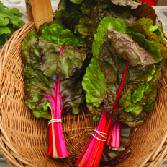-
CATEGORY ::
- All Seeds /
- All Flower Seeds









Christmas Rose Seeds
SEASON
Perennial
USDA ZONES
4 - 8
HEIGHT
12 - 18 inches
BLOOM SEASON
Winter
BLOOM COLOR
White
ENVIRONMENT
Partial shade
SOIL TYPE
Moist, well-drained, pH 6.2 - 7.4
DEER RESISTANT
Yes
HOUSE PLANT
Yes
SEASON
Perennial
USDA ZONES
5 - 10
HEIGHT
10 inches
BLOOM SEASON
Spring through winter
BLOOM COLOR
Mix
ENVIRONMENT
Partial shade
SOIL TYPE
Well-drained, pH 6.1 - 7.5
DEER RESISTANT
Yes
HOUSE PLANT
Yes
LATIN NAME
Sinningia speciosa
SEASON
Perennial
USDA ZONES
7 - 11
HEIGHT
28 inches
BLOOM SEASON
Spring to fall
BLOOM COLOR
Rosy purple
ENVIRONMENT
Full sun to partial shade
SOIL TYPE
Well drained soils, pH 6.6 to 7.5
DEER RESISTANT
Yes
SEASON
Perennial
USDA ZONES
7 - 11
HEIGHT
4 inches
WIDTH
12 - 18 inches
BLOOM SEASON
Early spring to early fall
BLOOM COLOR
Pink
ENVIRONMENT
Full sun to partial shade
FOOT TRAFFIC
Light
DEER RESISTANT
Yes
SEASON
Annual
USDA ZONES
3 - 11
HEIGHT
100 - 140 inches
BLOOM SEASON
Late spring to late summer
BLOOM COLOR
Mix
ENVIRONMENT
Full sun
SOIL TYPE
Well drained, pH 6.6 - 7.5
DEER RESISTANT
No
HOUSE PLANT
No
SEASON
Annual
USDA ZONES
4 - 9
HEIGHT
12 inches
BLOOM SEASON
Late summer to early fall
BLOOM COLOR
Mix
ENVIRONMENT
Full sun
SOIL TYPE
Moist, well-drained, pH 6.6 - 7.3
DEER RESISTANT
Yes
SEASON
Perennial
USDA ZONES
9 - 11
HEIGHT
120 inches
BLOOM SEASON
Mid summer to late fall
BLOOM COLOR
Orange, red, yellow
ENVIRONMENT
Full sun
SOIL TYPE
Sandy, well drained soil, pH 5.5 - 7.5
DEER RESISTANT
Yes
LATIN NAME
Mina lobata
SEASON
Annual
USDA ZONES
3 - 10
HEIGHT
12 inches
BLOOM SEASON
Mid summer
BLOOM COLOR
Pink
ENVIRONMENT
Full sun to partial shade
SOIL TYPE
Rich, moist soil, pH 6.6 - 7.5
DEER RESISTANT
Yes
HOUSE PLANT
Yes
LATIN NAME
Mimosa pudica
About...
Christmas Rose (Helleborus Niger) - Christmas Rose seeds can be started to grow this unique ornamental that blooms in the winter. Helleborus Niger Christmas Rose has a rugged, coarse-textured, leathery, shiny green foliage that remains attractive year-round. The plant is stemless, herbaceous and can be used as a ground cover that reaches 12 - 18 inches tall and spreads about the same across.
MORE FLOWER OPTIONS
Planting Directions
TEMPERATURE
70F
AVERAGE GERM TIME
28 - 56 days
LIGHT REQUIRED
Yes
DEPTH
1/16 inch
SOWING RATE
5 seeds per plant
MOISTURE
Keep moist until germination
PLANT SPACING
18 inches
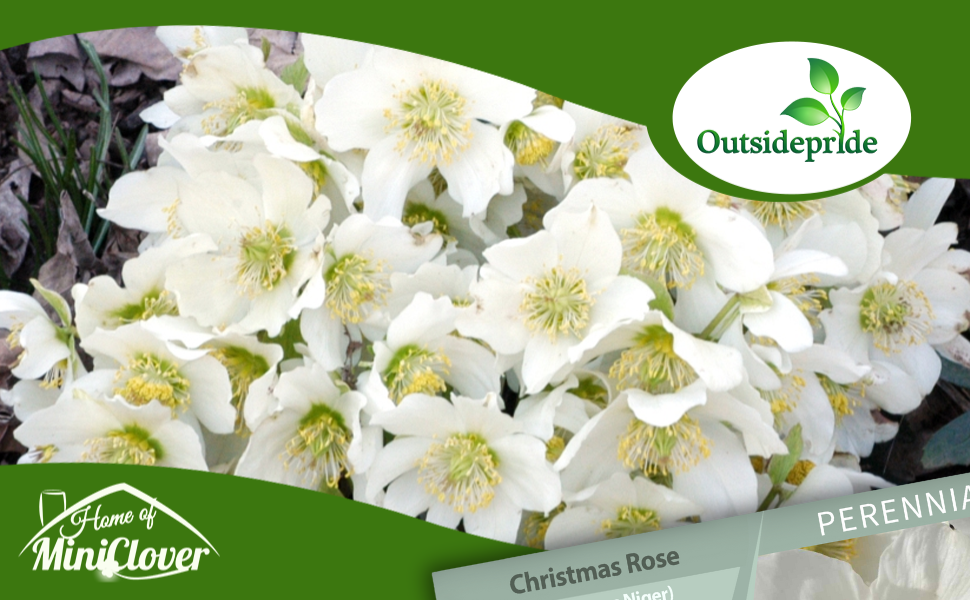
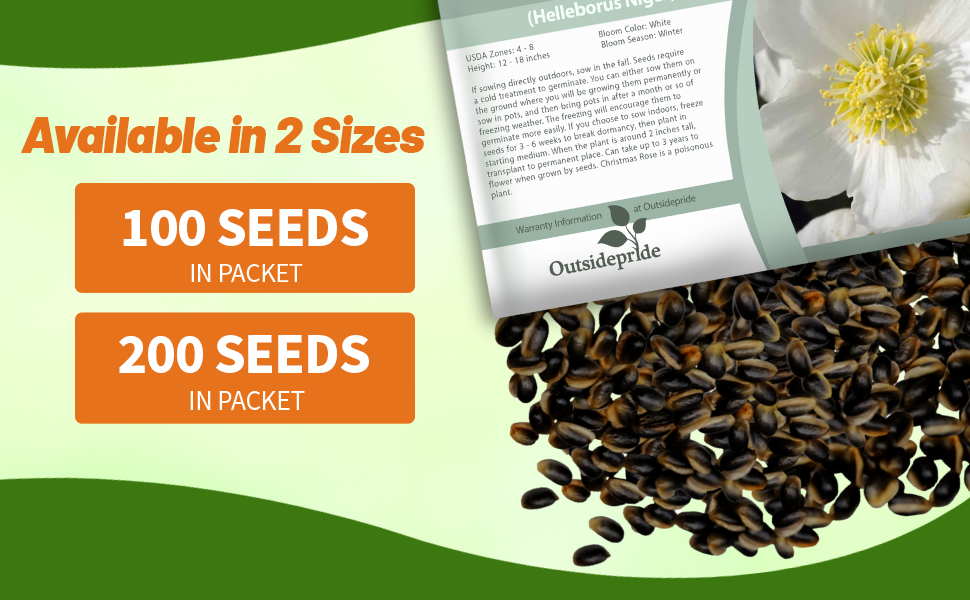
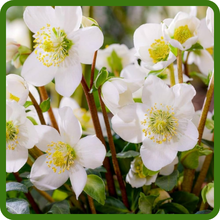
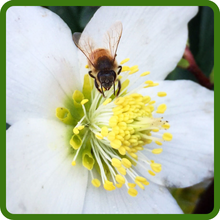

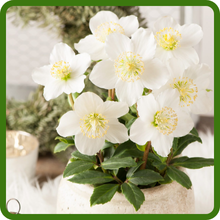
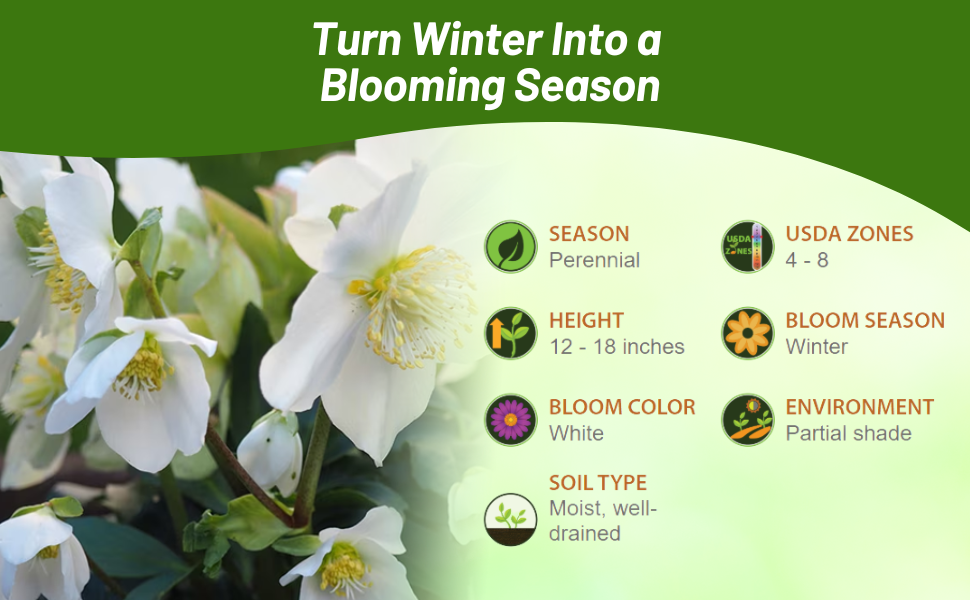

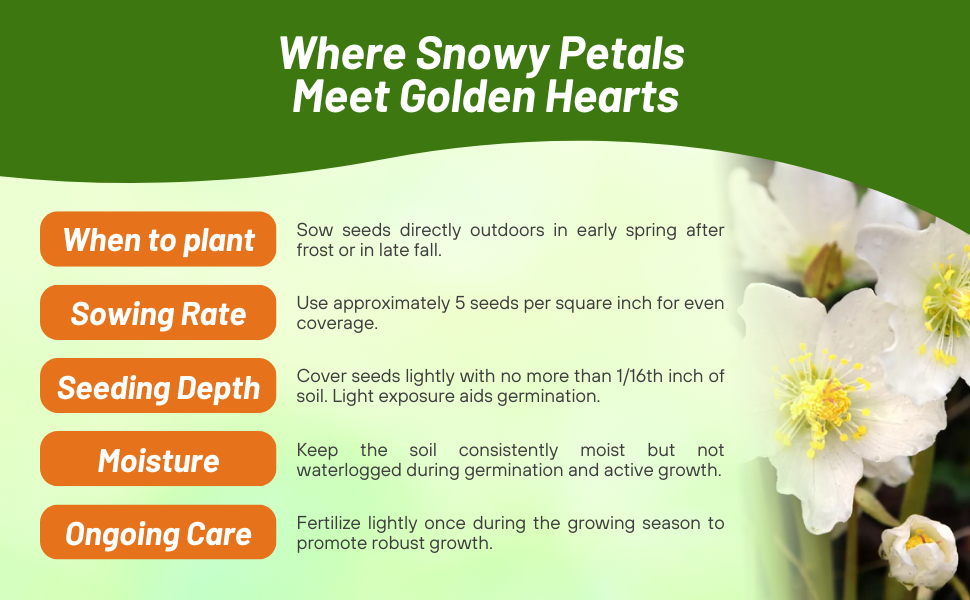
Christmas Rose (Helleborus Niger) - Christmas Rose seeds can be started to grow this unique ornamental that blooms in the winter. Helleborus Niger Christmas Rose has a rugged, coarse-textured, leathery, shiny green foliage that remains attractive year-round. The plant is stemless, herbaceous and can be used as a ground cover that reaches 12 - 18 inches tall and spreads about the same across.
Common Questions
Why is it called a Christmas rose?
Originally native to mountainous central Europe, Helleborus niger is commonly known as the "Christmas rose" because it flowers during the winter, typically around Christmastime in mild climates. According to old folklore, it was believed to have emerged in the snow, said to have grown from the tears of a young girl who had no gift to present to Christ in Bethlehem.
Will plants return each year?
Christmas roses are a perennial and will come back every year after dormancy when planted in the correct hardiness zones.
Where do Christmas roses grow best?
The Christmas rose thrives when planted beneath a deciduous tree. This positioning provides the ideal shade in summer and the necessary sunlight in winter. Selecting the right location with proper drainage, neutral to alkaline soil, and suitable lighting is crucial for maintaining healthy evergreen leaves and preventing crown rot disease.
Planting Directions
TEMPERATURE
70 - 75F
AVERAGE GERM TIME
21 - 28 days
LIGHT REQUIRED
Yes
DEPTH
Do not cover the seed but press into the soil
SOWING RATE
4 seeds per plant
MOISTURE
Keep seed moist until germination
PLANT SPACING
10 inches
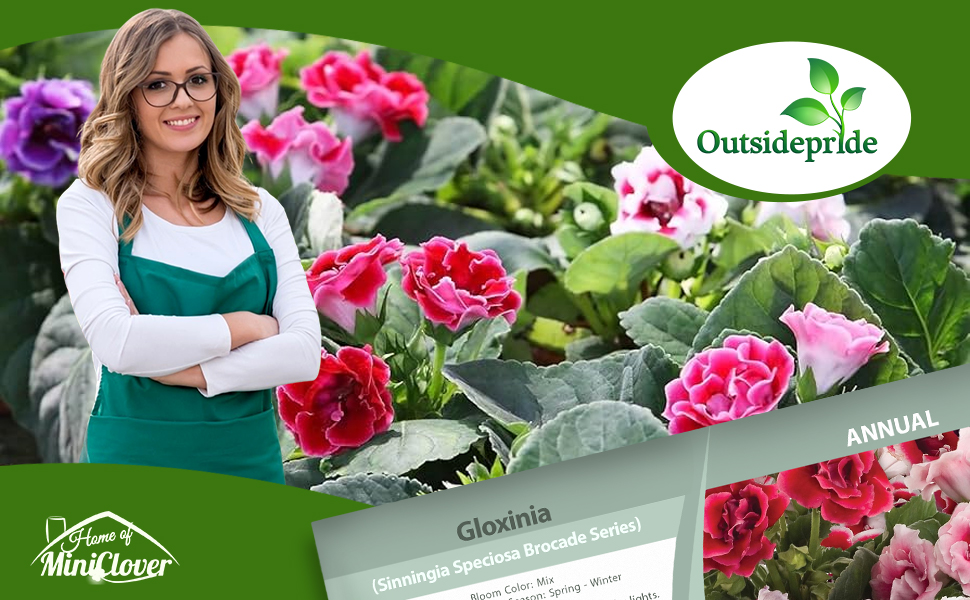
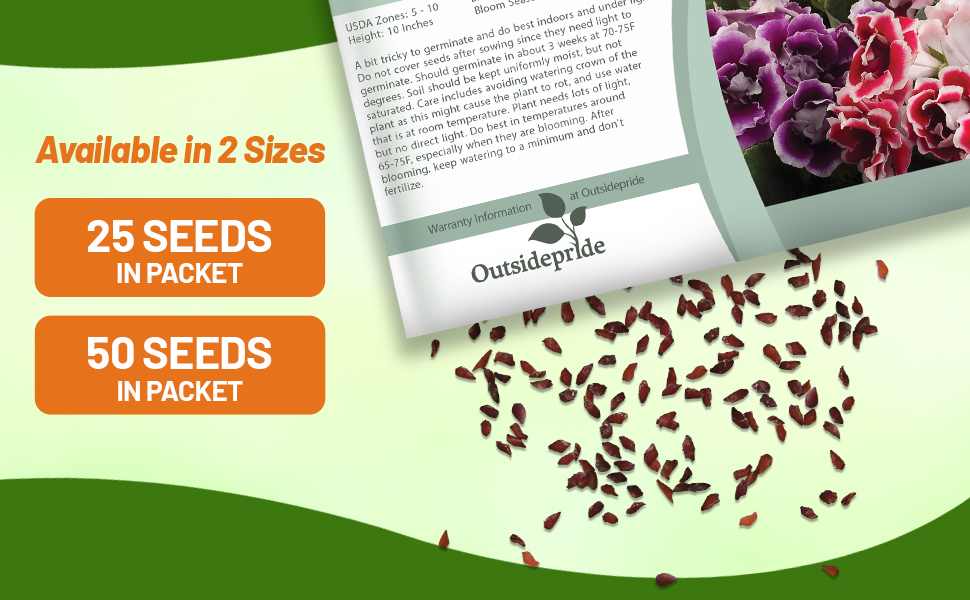
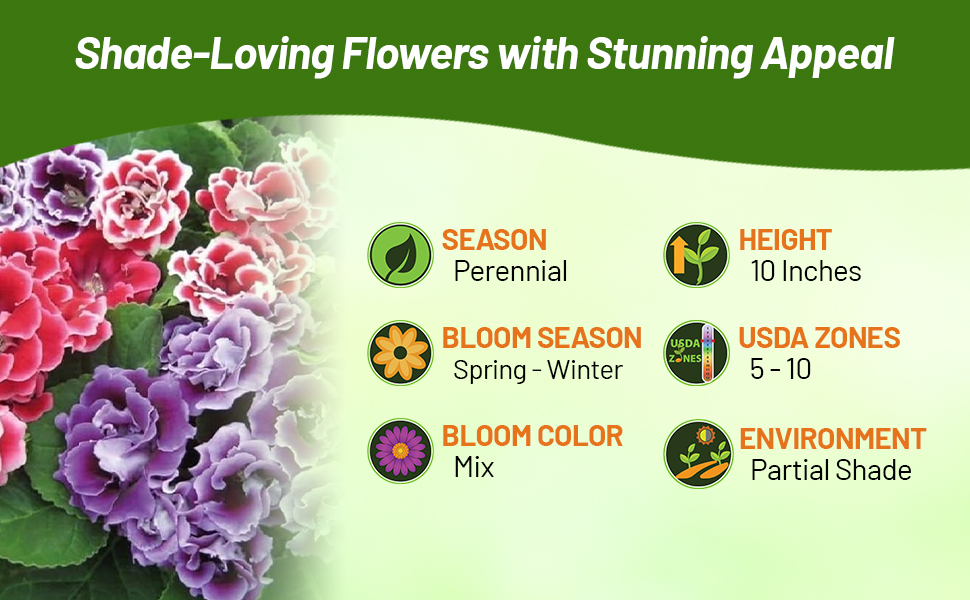
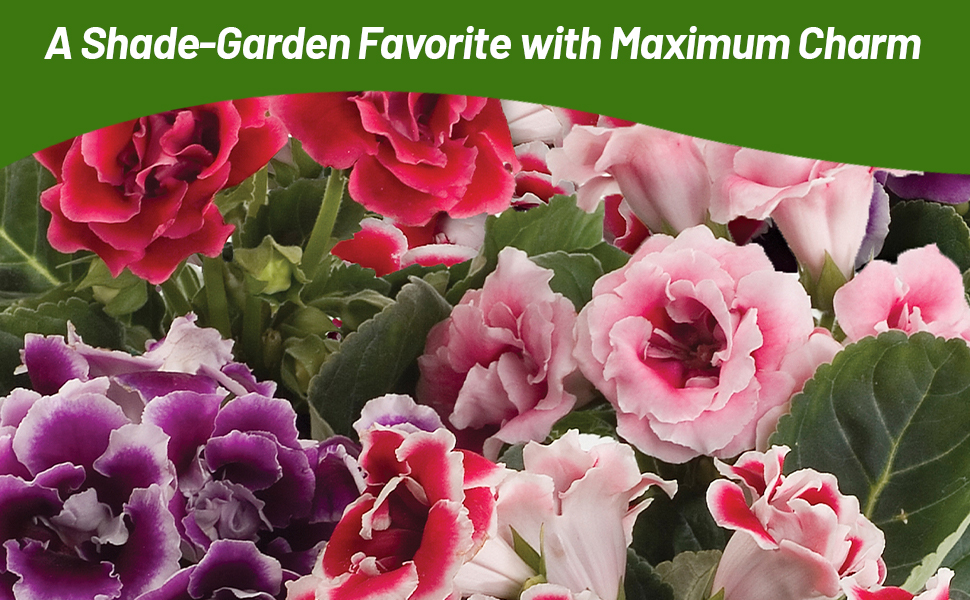
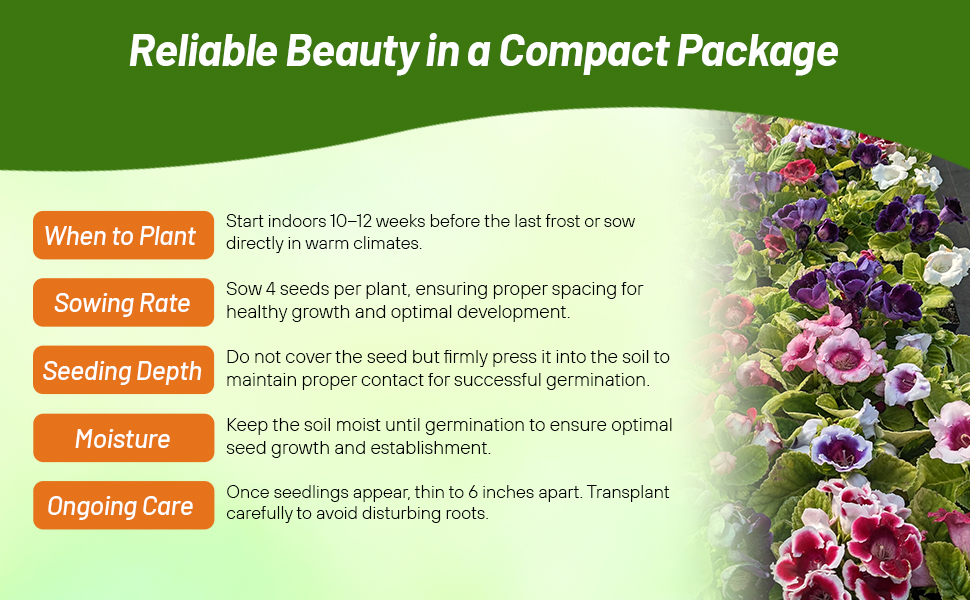
Gloxinia (Sinningia Speciosa Brocade Series) - Sow Gloxinia seeds to produce a beautiful mixture of red, blue, and white blooms. These compact Gloxinia plants blossom four to six months after sowing. They will flower for about 2 months, go dormant for about 2 months, and then begin growing again and start flowering. Gloxinias make a great house plant, giving wonderful, colorful blooms! Sinningia Speciosa is often referred to as Florist's Gloxinia or Brazilian Gloxinia.
Gloxina seeds are a bit tricky to germinate and do best indoors and under lights. Do not cover the flower seeds after sowing since they need light to germinate. Sinningia Speciosa seeds should germinate in about 3 weeks at 70 - 75F degrees. Soil should be kept uniformly moist, but do not keep it saturated. Florist's Gloxinia care includes avoiding watering the crown of the plant as this might cause the plant to rot, and use water that is at room temperature for watering. The Brazilian Gloxinia plant needs lots of light, but no direct light. Gloxinias do best in temperatures around 65 - 75F degrees, especially when they are blooming. After blooming, keep watering to a minimum and don't fertilize.
Common Questions
Do I need to prune my gloxinia?
To encourage a longer bloom season, you will need to deadhead your spent flowers. After the bloom period is over and your plant enters dormancy, prune back any dead or dying foliage.
My leaves are dropping, what do I do?
This can occur from sudden temperature changes such as drafts.
My leaves look scorched, why?
Direct sunlight can burn the leaves of your gloxinia, causing them to scorch and crisp.
My flowers are losing their vibrancy, what do I do?
This is typically caused by inadequate light move your plant to an area with more light but not direct sunlight.
Planting Directions
TEMPERATURE
73F
AVERAGE GERM TIME
14 - 21 days
LIGHT REQUIRED
Yes
DEPTH
Surface sow seed and press in to soil
SOWING RATE
7 - 8 seeds per plant
MOISTURE
Keep seeds moist until germination
PLANT SPACING
18 - 24 inches
Chinese Foxglove (Rehmannia Angulata Rosy Purple) - Rehmannia Angulata seeds can be grown as annuals in all climates and as perennials in USDA zones 7 - 11. Commonly referred to as Chinese Foxglove, this beauty does well in full sun or partial shade, and the Chinese Foxglove plants continuously produce large, foxglove-like flowers from late spring through fall. The flowers can measure 2 - 3 inches across and are rosy purple with spotted throats. Chinese Foxglove is great in the flower border, and the flowers are nice for cutting. A synonymous botanical name is Rehmannia elata.
How To Grow Chinese Foxglove From Seeds: Sow the Rehmannia Angulata seeds indoors in the late winter. In a starter tray using quality soil, press the flower seeds gently into the soil. Keep the Chinese Foxglove seeds consistently moist until germination occurs. Transplant the Chinese Foxglove seedlings into 3 inch pots and let them grow on indoors until all danger of frost has passed. Harden the Chinese Foxglove plants off for 10 days or more before planting outdoors. Provide winter mulch for extra protection in zones 7 and 8.
















